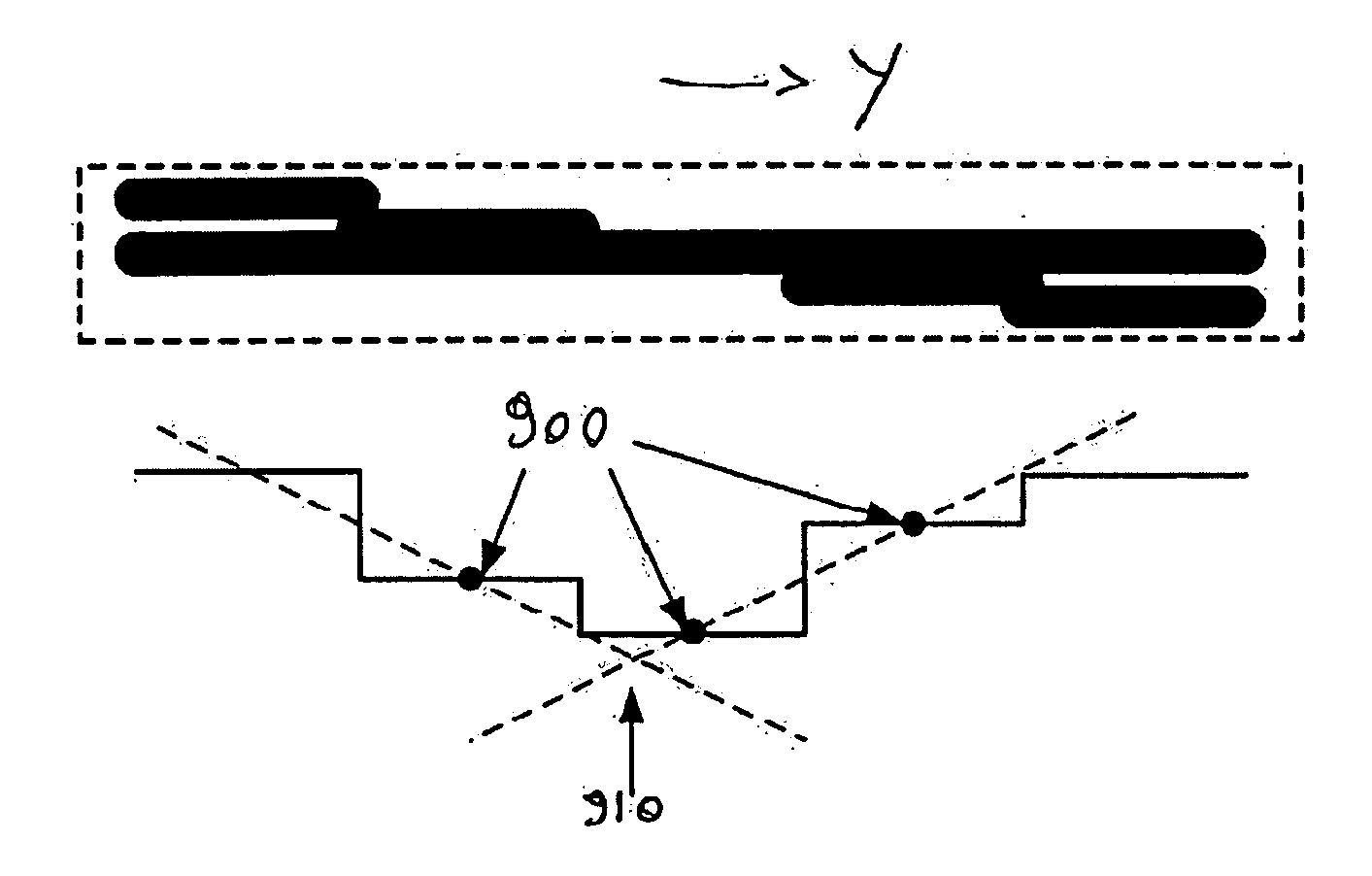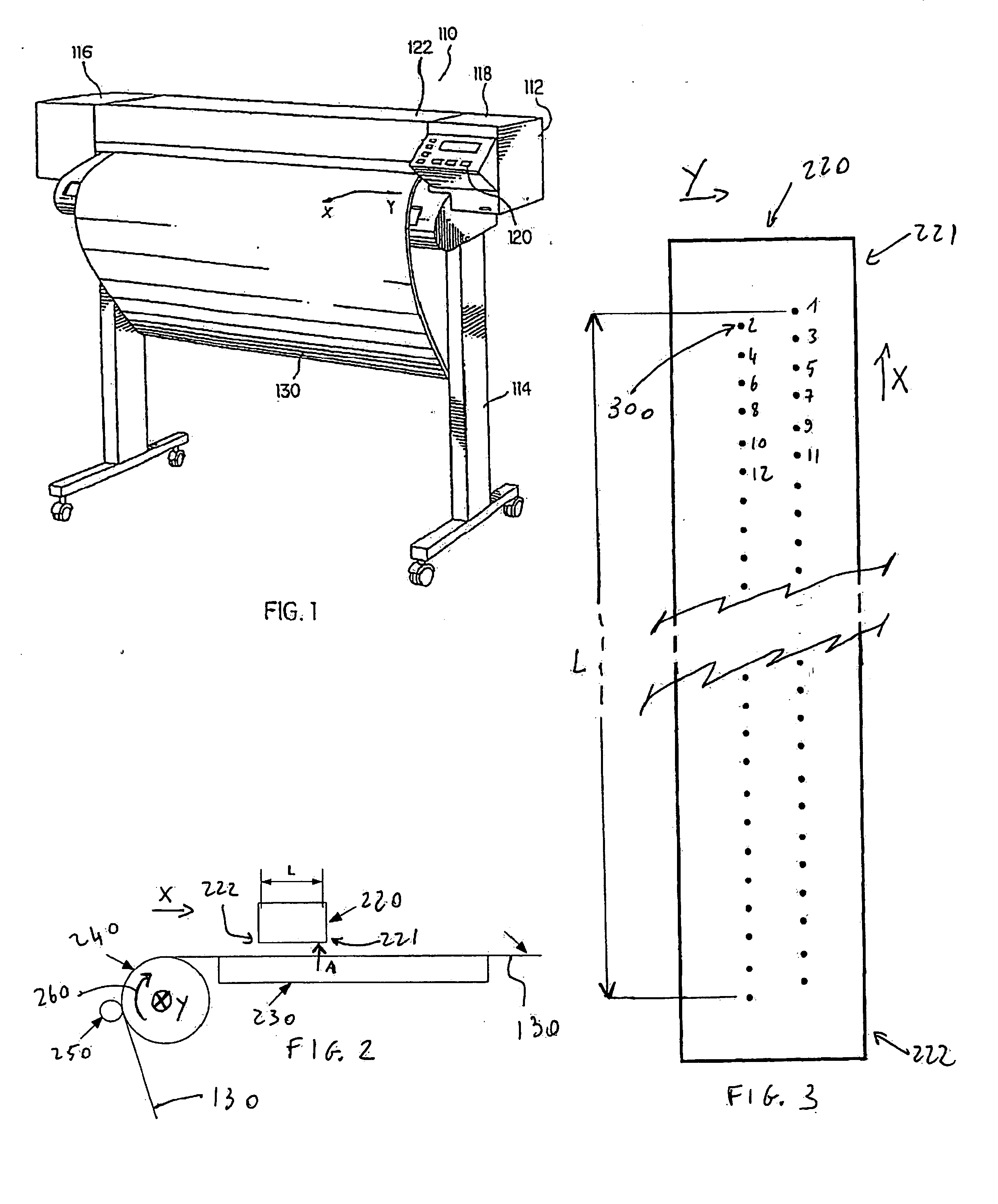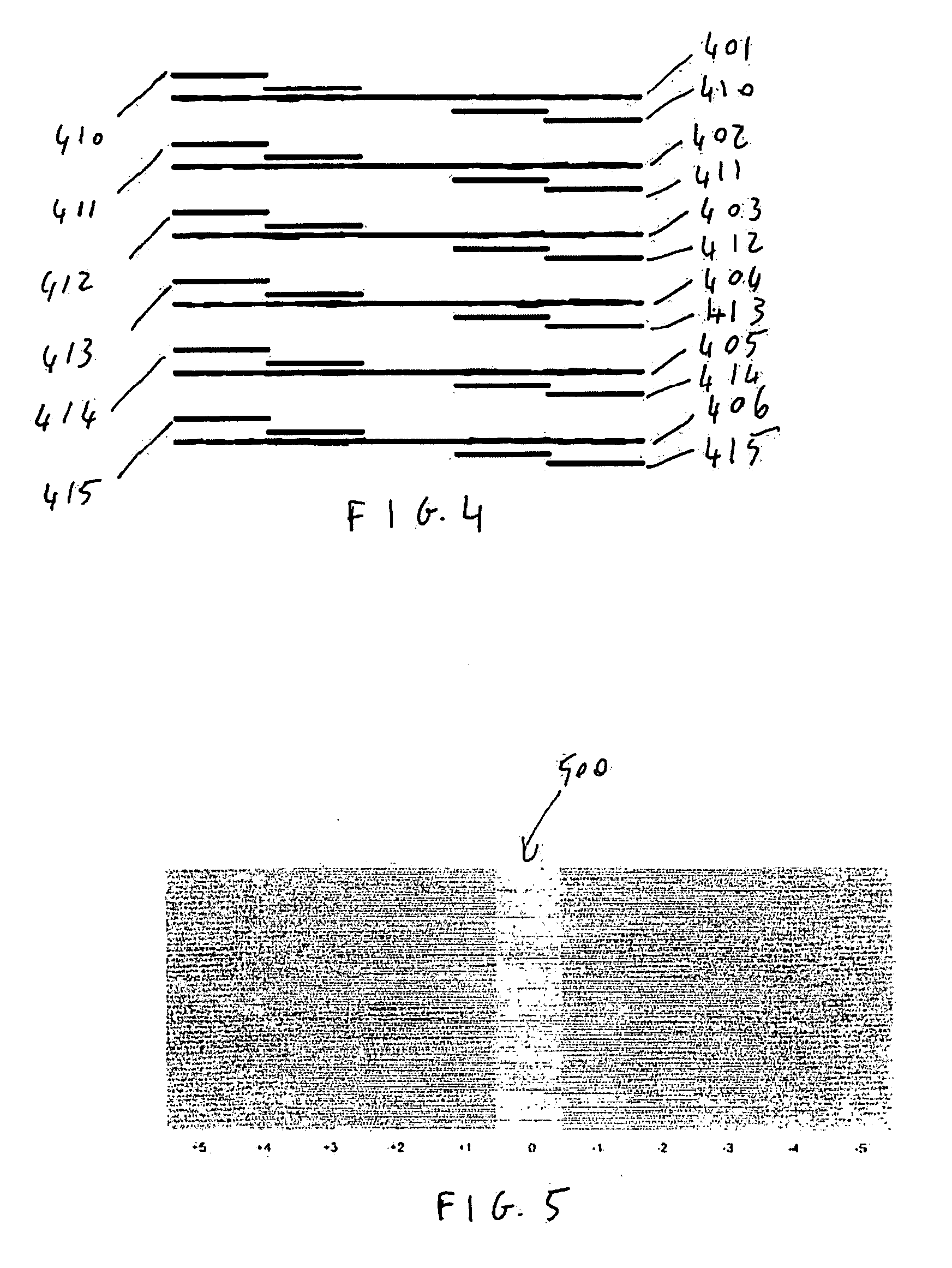Calibration method for a printer
a printer and calibration method technology, applied in printing, other printing apparatus, etc., can solve the problems of incomplete or inaccurate conclusions on the characteristic of the mechanism, and achieve the effect of improving the scanning effect of the human eye and improving the stability of the sensor reading
- Summary
- Abstract
- Description
- Claims
- Application Information
AI Technical Summary
Benefits of technology
Problems solved by technology
Method used
Image
Examples
first embodiment
[0046] One of the mechanism characteristic or of the swath height being known or estimated, an interference pattern as represented on FIG. 4 is printed as follows according to the invention. In a first pass of the printhead, the printhead prints lines 401 to 406. These lines are printed using 6 nozzles separated by 10 nozzles. In the example, the printhead has two columns of nozzles, the nozzles being staggered. We will assume that the nozzles of a first column are described with odd numbers starting from the end 221 of the printhead 220 further away from the drive roller 240 (nozzles 1, 3, 5, 7 etc . . . ) and that the nozzles of a second column are described with even numbers starting from the same end 221 (2, 4, 6, 8, etc . . . ) such that along the X axis the nozzles follow each other in the order 1, 2, 3, 4, 5 etc . . . , the nozzle number 1 being located on the end 221 of the printhead further away from the drive roller. Line 401 is printed by nozzle 6, line 402 is printed by ...
third embodiment
[0052] In a third embodiment, the intrinsic precision is improved and the improved result is obtained without extrapolation.
[0053] In the third embodiment, the overlay pattern is not made of steps but made of the approximation of a line at an angle to the corresponding line of the base pattern, the line of the base pattern being along the Y direction, i.e. perpendicular to the direction of media advance. In the third embodiment, the approximation of the line at an angle being built with steps similar to the steps of FIG. 4, whereby one of every two steps is formed by alternating segments 1101 and blanks 1102 whereby the concentration of blank spaces increases progressively relative to the concentration of segments, or whereby the size of the blanks progressively increases relative to the size of the segments in the positive sense of the Y direction, in such a manner that the step fades away in the Y direction indicated in FIG. 11. The other steps are built in the opposite manner, by...
fourth embodiment
[0054] It should however be noted that the optical intensity of the overlay pattern was found to be higher in the centre 1300 of the transition fading zone than in the edges 1310 and 1320 due to the fact that the drops forming the print overlap when contiguous, such as towards the edges, and do not overlap or overlap to a lesser extend in the central zone 1300, so that the local concentration of printed area is higher in the central zone than at the edges. This non homogeneity of the optical intensity may have a negative influence on the reading by the optical sensor, and was corrected in a fourth embodiment where an additional overlay pattern was inserted between the previously described overlay pattern, but in opposition of phase so as to re-equilibrate the optical density, as illustrated in FIG. 12. It should be noted that both in FIGS. 11 and 12 only two steps of the overlay pattern equivalent to the overlay of FIG. 4 are represented. The base pattern itself remains unchanged. A...
PUM
 Login to View More
Login to View More Abstract
Description
Claims
Application Information
 Login to View More
Login to View More - R&D
- Intellectual Property
- Life Sciences
- Materials
- Tech Scout
- Unparalleled Data Quality
- Higher Quality Content
- 60% Fewer Hallucinations
Browse by: Latest US Patents, China's latest patents, Technical Efficacy Thesaurus, Application Domain, Technology Topic, Popular Technical Reports.
© 2025 PatSnap. All rights reserved.Legal|Privacy policy|Modern Slavery Act Transparency Statement|Sitemap|About US| Contact US: help@patsnap.com



